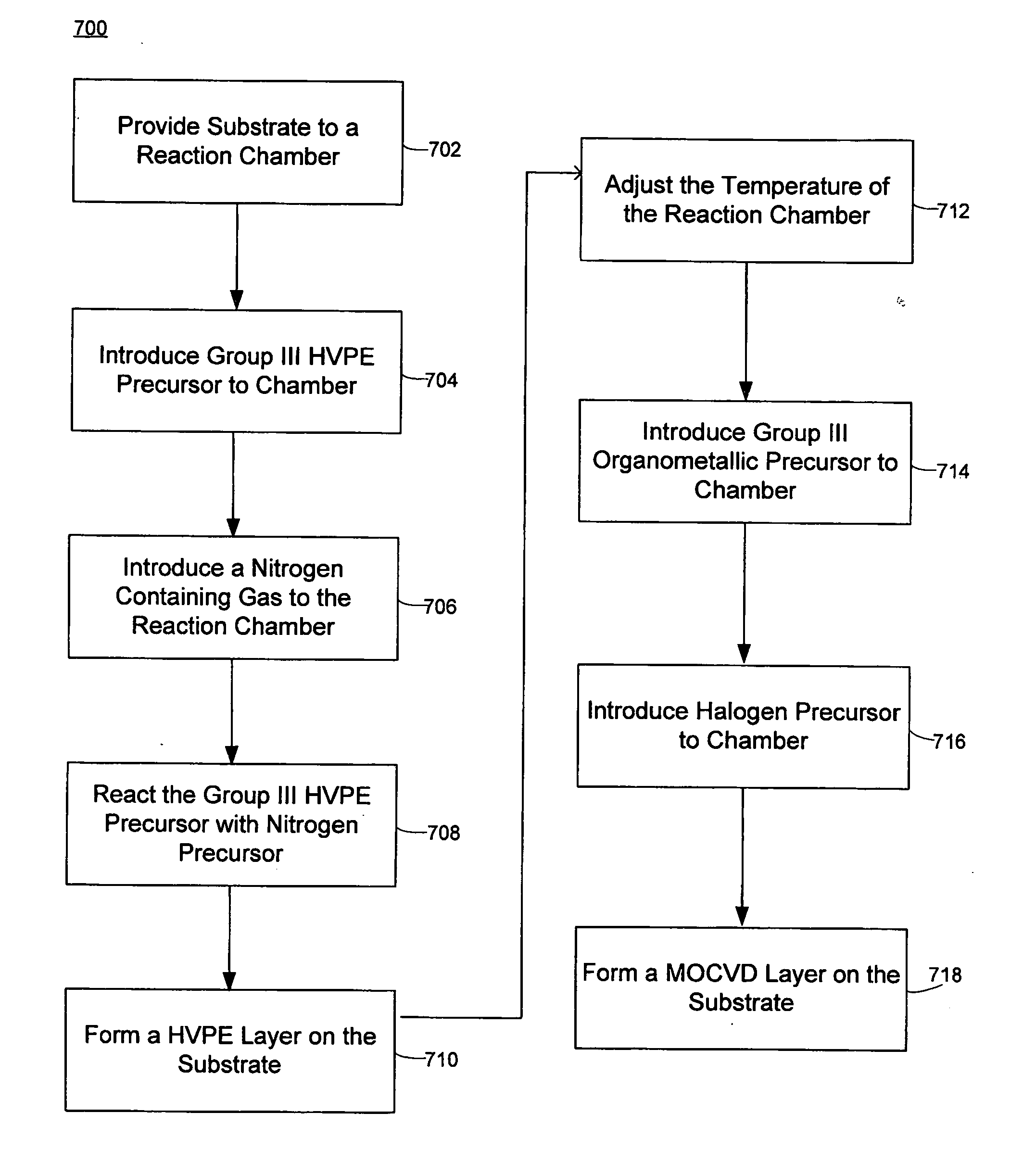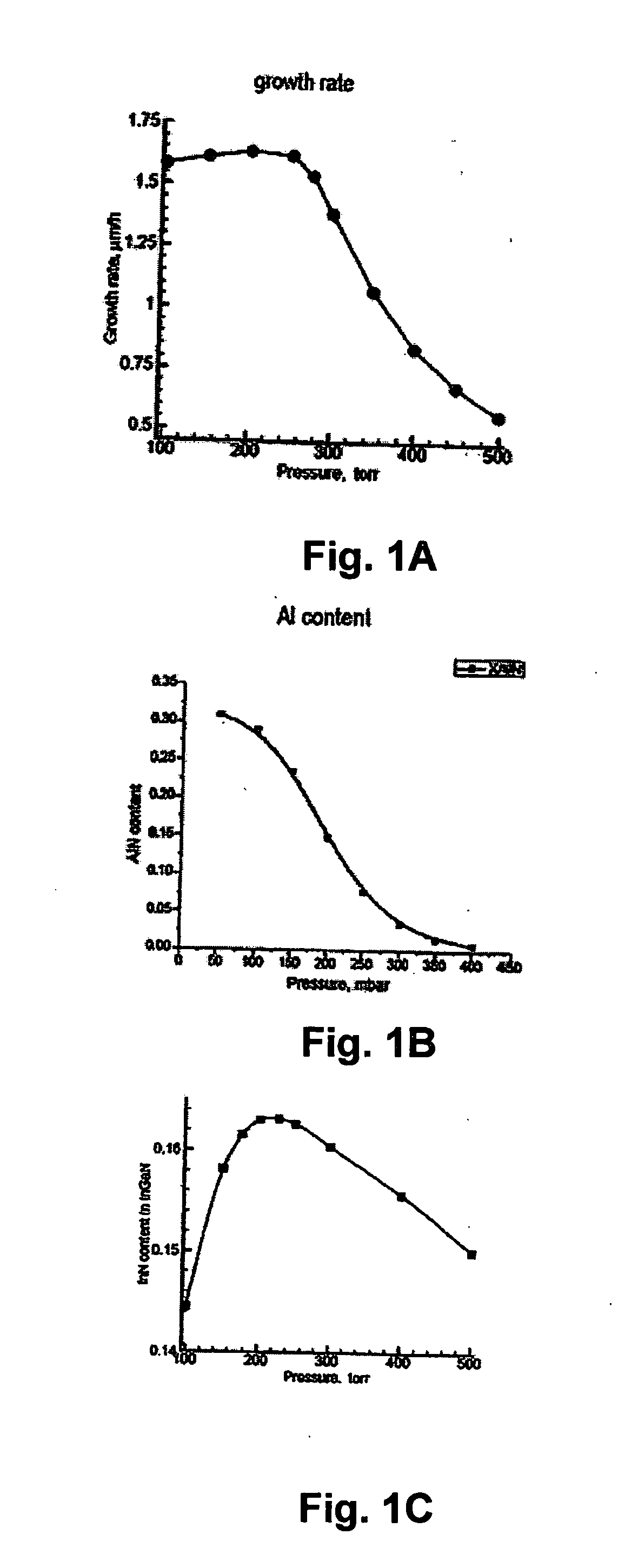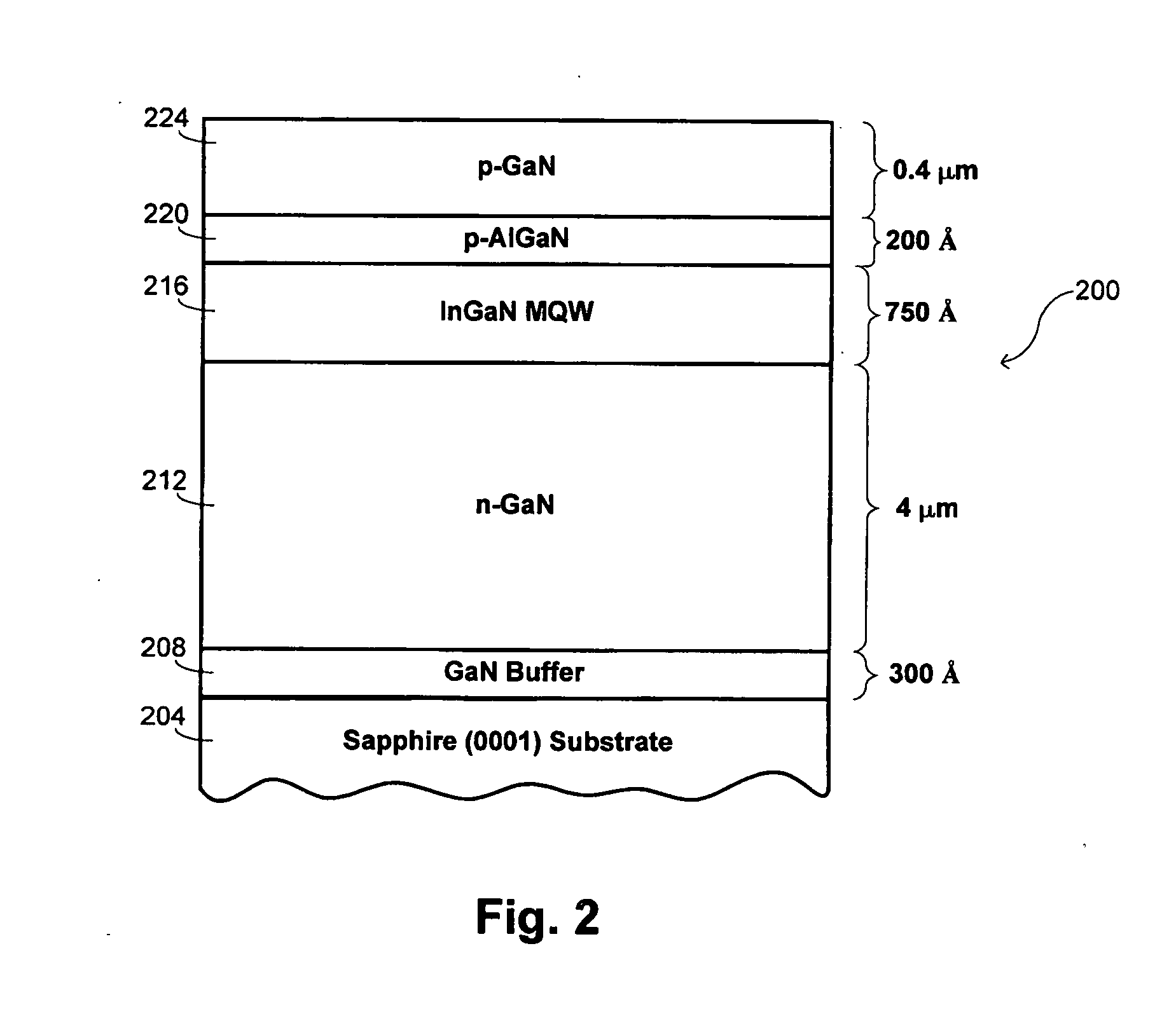Parasitic particle suppression in growth of III-V nitride films using MOCVD and HVPE
- Summary
- Abstract
- Description
- Claims
- Application Information
AI Technical Summary
Benefits of technology
Problems solved by technology
Method used
Image
Examples
Embodiment Construction
[0036] Systems and methods to suppress the formation of parasitic particles during the deposition of a III-V layer with metal-organic chemical vapor deposition (MOCVD) are described. A particle suppression compound such as a hydrogen halide (e.g., HCl) may be introduced with a Group III metal-organic precursor (e.g., an alkyl gallium precursor) and / or a Group V precursor (e.g., ammonia) to suppress the formation of parasitic III-V particles in the space above a substrate. The partial pressure of the particle suppression compound (or compounds) may be less than the partial pressures of either the Group III or Group V precursors during the deposition of the III-V layer.
[0037] The particle suppression compounds allow the Group III and Group V precursors to be supplied to the reaction chamber at higher partial pressures than would otherwise be possible for growing high quality III-V films with MOCVD. The ability to increase the partial pressures of the film forming precursors without a...
PUM
| Property | Measurement | Unit |
|---|---|---|
| Temperature | aaaaa | aaaaa |
| Temperature | aaaaa | aaaaa |
| Thickness | aaaaa | aaaaa |
Abstract
Description
Claims
Application Information
 Login to View More
Login to View More - R&D
- Intellectual Property
- Life Sciences
- Materials
- Tech Scout
- Unparalleled Data Quality
- Higher Quality Content
- 60% Fewer Hallucinations
Browse by: Latest US Patents, China's latest patents, Technical Efficacy Thesaurus, Application Domain, Technology Topic, Popular Technical Reports.
© 2025 PatSnap. All rights reserved.Legal|Privacy policy|Modern Slavery Act Transparency Statement|Sitemap|About US| Contact US: help@patsnap.com



